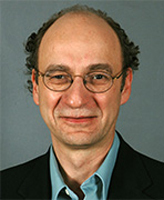
A project on the dynamics of social networks at the University of Notre Dame’s Interdisciplinary Center for Network Science and Applications (iCeNSA) has found a link between cell phone usage and relationship strength.
The study is a collaborative effort, led by Notre Dame faculty members from the College of Arts and Letters, the College of Science, and the College of Engineering. Principal investigators are Mark Alber, Vincent J. Duncan Family Professor of Applied Mathematics; Nitesh Chawla, associate professor of Computer Science and Engineering; Associate Professor David Hachen and Assistant Professor Omar Lizardo from the Department of Sociology; and Zoltán Toroczkai, associate professor in the Department of Physics.
Toroczkai and his students worked on the modeling aspects while Chawla and his group focused mainly on data mining and prediction. Hachen and Lizardo both studied the number and frequency of calls and text messages to explore reciprocity—the way people respond to each other—and how it emerges over time.
“If I called you a lot and you didn’t call me a lot, that’s an imbalanced relationship,” Hachen says. “It turns out that’s extremely important. We now believe what’s really important in networks is not the formation of ties—which is important—but instead the persistence or the dissolution of ties.”

According to Hachen, this social network research is unique because in addition to identifying ties between people, it also investigates how strong or weak those ties are.
The researchers used cell phone data—numerical information such as the number, frequency, and timing of calls and texts—from 7 million people to form a picture of a social network. Neither the content of conversations nor any information such as phone numbers, which could have led to the identification of individuals, were used in the study.
That social network gave the researchers an idea of how many friends a caller has in addition to how many people the caller interacts with and the strength of those ties. Combined together, that information even enabled them to predict future behaviors.
To study relationship strength, researchers also looked at who initiated contact and how frequently it occurred, discovering that ties that are more reciprocal are more likely to remain intact. However, if there is an imbalance, ties will most likely dissolve.
“If you have 20 friends, and I have 20 friends, we can achieve a balance,” Hachen says. “If I have 20 friends and you have two, you’re more likely to try to call me a lot more.”
That exemplifies one key distinction between social and physical networks: in social networks a person tends to connect with others who connect as much as they do, whereas physical networks like air transportation systems must connect major hubs with many regional airports because to connect major hubs only to each other breaks the system.

Lizardo says the type of data affects social network research. A decade ago, he says, most data came from interviews that required people to remember friends and provide subjective information.
Now, the ability to gather information about peoples’ actual behavior rather than memories about their behavior means that researchers can make more accurate observations. Interviews often reveal only strong ties, yet weak ties are very important, too. Behavioral research reveals both.
The next step for the sociology group is to add another layer of data–attitudes, beliefs, and behaviors from surveys.
The team has also begun working on another cell phone project that will provide 250 Notre Dame freshmen with smart phones. The study aims to address questions such as whether ties influence people’s behavior or whether people choose to form ties based on existing similarities.
Learn More >
- Department of Sociology
- David Hachen faculty page
- Omar Lizardo faculty page
- Interdisciplinary Center for Network Science and Applications
- Nitesh Chawla faculty page
- Zoltán Toroczkai faculty page
- Mark Alber faculty page
Originally published at newsinfo.nd.edu.


